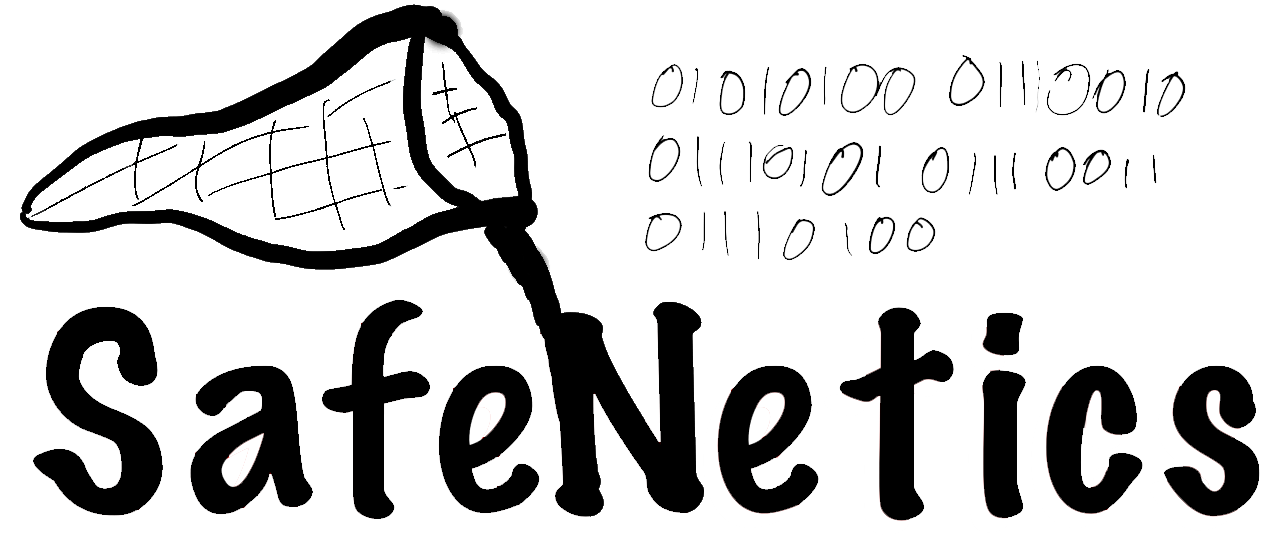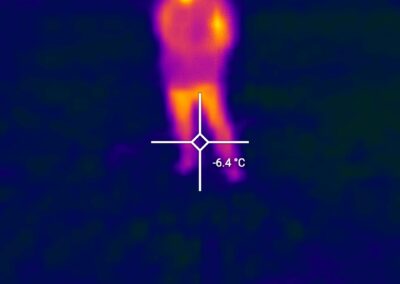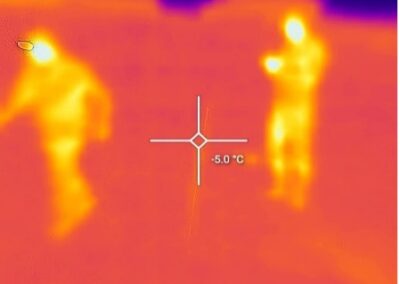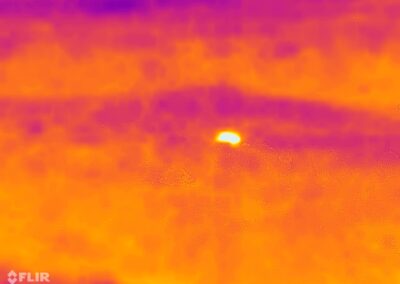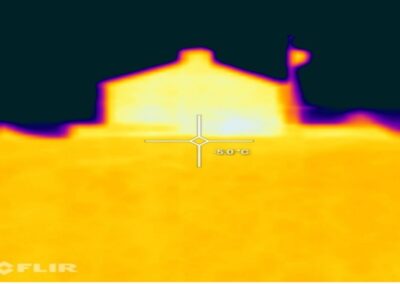Filming with BBC Click – SafeNetics Blog
Graham Worsley of SafeNetics reports on the weekend spent filming with BBC Click on February 19th and 20th 2022.
Our clip is shown as part of the ‘Return of Mobile World Congress’ episode broadcast on 5th March 2022 and is available in the UK on iPlayer. Click below to see our clip
This work is carried out as a part of the DCMS funded project: Mobile Access North Yorkshire (MANY), with close collabroation wtih Swaledale Moutnain Rescue Team. SMRTs dog team were away on another exercise and so Andy of Upper Wharfdale team brought Kes over for the demo.
Click here to see our BBC Click clip
Saturday 19th February

Storm Eunice delayed my arrival in Swaledale until lunchtime on Saturday morning, and when we arrived Dave Lund of Safenetics, David Grace and Josh Shackleton of University of York, together with David Rutter and Graham Brown of Swaledale Mountain Rescue Team had already set up at the CB Inn, our HQ for the weekend. The pub had very kindly allowed us to set up in the car park and provided power.

The focus of the demonstration to BBC Click was the work we’d been doing with Swaledale Mountain Rescue Team, implementing a range of digital apps to help with search and rescue operations.
with
This demonstration required the University of York team to set up a 5G mobile network, as the area has little or no mobile coverage, and our job was to run the applications and service over a mission critical server. The BBC were keen to show a dog rescue and night search using thermal imaging 5G phones which are visually engaging and impressive, and we were keen to show a full range of applications including flying a drone for video streaming and casualty medical monitoring. Although we set up base at the pub, the demonstrations were held on a hillside about 3.5km distance from the pub, where the owners had kindly agreed we could film and let us use power from the farmhouse. The technical set up essentially comprised of an open source 5G gNB developed by University of York with Starlink LEO satellite backhaul, together with various mobile devices with different sensors and apps.
Th first filming task was with Kes the search dog with Andy from the Upper Wharfdale Fell Rescue team.



The plot to the left shows Kes’s tracks as she searched the hillside. There would usually be more than one dog involved in a search, and they would systematically cover an agreed area. Using GPS enables a check on areas that have been searched, and as one dog tires another can step in. The large amounts of red at the top of the screen was where Kes had found the casualty and stopped. I was throwing a ball for her to fetch while Andy was interviewed by the BBC.

On Saturday evening Dave Lund went off with the BBC Team and Swaledale Mountain Rescue Team back to the farm to do some night filming. We thought the thermal image camera 5G smartphone phone has an obvious application in night search.
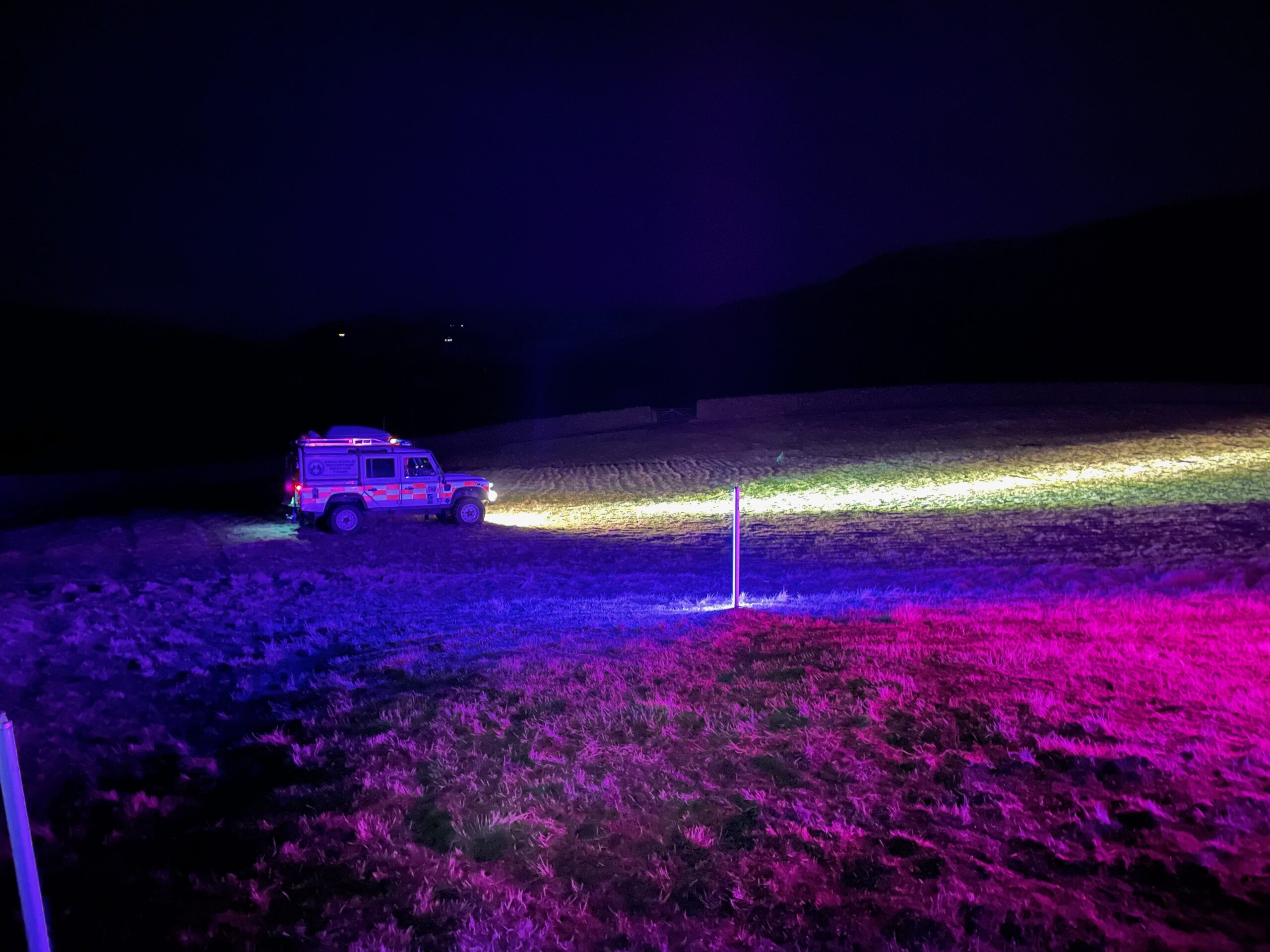
Below
Dave pretending to be missing, actually hiding behind a wall. An SMRT team member (Graham) searched for Dave, the pretend missing person, with the thermal imaging 5G smartphone.
Sunday 20th February
After a good night’s sleep on Saturday night the weather changed and the latest storm, Franklin, set in. Because we were concerned about flooding as the waters rose in Arkle Beck, we cut short some of the proposed activity.
Swaledale Mountain Rescue Team brought a full team of around 10 people, together with a “casualty volunteer” who was to be rescued. The technical set up was similar to that at the CB Inn, but we were able to set up in one of the farm buildings, out of the weather.
The University of York 5G gNB was set up inside the building with the two small antennas outside by the door. The intention is to have the gNB and antennas mounted on the SMRT rescue vehicle. In this case we chose to mount the gNB in the farm due to the high risk of callout of SMRT on the day due to the storm weather. If SMRT were called out, they would have to leave us immediately. We timed how long to set up. From opening the packaging to live gNB/starlink service took around 15-20 minutes. This would, of course we quicker if the system is already installed on the rescue vehicle.
The image below shows Yi Chu from University of York, on the laptop screen, who couldn’t be with us physically on the day. Yi is the lead developer of the gNB and was present online (over starlink) to oversee the operation of the gNB, and on hand in case of any problems. All worked OK. Josh took a phone out to do a range test, and still had full bars and service on the phone around 450m away at the top of the adjacent hill where the trial rescue took place. The weather wasn’t favourable for a full and accurate test, but it gave a good confidence.


The mountain rescue team then set off to bring down the “casualty” who’d taken off up the side of the hill and had found a spot to lie down.

Patch sensors were attached to the ‘casualty’ when she was found and were monitored as she is placed carefully in a mountain rescue survival bag and on to a stretcher, and then brought down the hillside. The advantage of the sensors is that they are low cost and easy to use, as compared to a full ambulance life sign monitoring device. On this occasion we attached ECG, BP and temperature but on a normal rescue it would be unlikely ECG would be used, as it is harder to attach correctly, and Swaledale Mountain Rescue Team advise that the ECG measurement device could interfere if defibrillation was required.
A significant advantage of using these telemetry devices is that life signs can be monitored remotely, so that an external clinical professional could advise if any medical intervention is required. Normally, a casualty rescue team would have to pause regularly to check the casualty’s vital signs. With the sensors this isn’t required so the rescue can proceed with greater speed. This may help save lives in the incidents that require speedy transfer to ambulance and onward to A&E.

The casualty was successfully brought down and transferred to a waiting mountain rescue vehicle.
Swaledale Mountain Rescue Team are regularly called out to assist Yorkshire Ambulance with emergencies in hard-to-reach locations as well as to support casualties from outdoor pursuits. They are trained in first aid and often include clinicians among their volunteers
We wrapped up in time for a late lunch on Sunday as the waters rose.

Acknowledgements
We’d like to thank everybody involved in an excellent demonstration, particularly Graham Brown, Dave Rutter and Paul Denning from Swaledale Mountain Rescue Team, Kes the rescue dog and Andy. We especially would like to thank the owners of Castle Farm (the Law family) and also the management and staff of the CB Inn.
A big thanks especially to Rebecca at NYCC, its all your fault 😉
